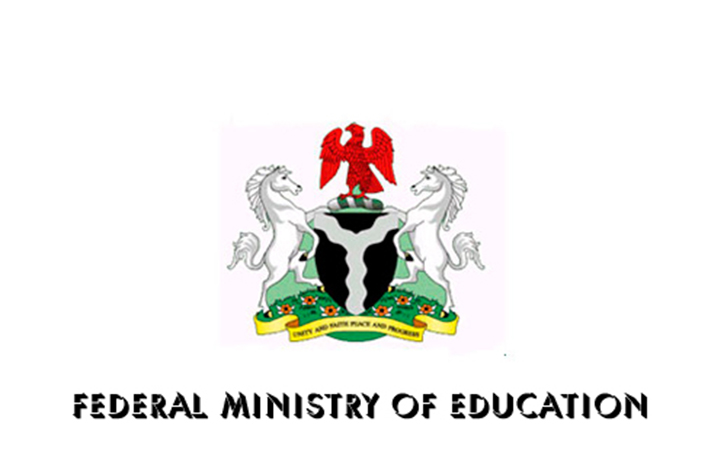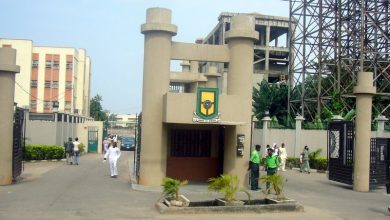Federal Government Releases Another Guideline For School Resumption

The Federal Government has again, released guidelines ahead of the resumption of schools at every grade classes in the country.
The new guideline release by the Government for the safe reopening of school and learning facilities across the country highlighted actions, measures and requirement necessary for resumption.
The document which was released by the Federal Ministry of Health and the National Centre for Disease Control (NCDC), Education emergencies working group, and endorsed by the Minister of Education, Adamu Adamu, stipulated that learners should be supported to stay two meters apart.
The Government however, was silent on a date for the resumption of schools.
The 52 page document also revealed that in a situation where the two-meter rule cannot be applied, other risk mitigation strategies may be adopted. “Examples include early years, younger primary school children, and those with additional needs”.
“The scenarios require organizing learners and children into small groups with consistent membership and compliance to the risk mitigation strategies. The membership of these groups should not change unless the NCDC public health guideline suggests otherwise.”
The document also noted that government will carry out a rapid assessment and determine funding requirement for upgrading infrastructure and facilities to sustain prescribed safe school reopening requirement.
In the document, it was also, outlined that it is for the education sector to work towards the eventual reopening of schools and learning facilities. Included in the guidelines are recommendations for the review of existing policies, and risk mitigation strategies in the use of schools for other purposes, such as distance learning centres, temporary shelters, isolation, quarantine and treatment centres, markets, voting centres among others.
“As a responsible government, it is also our duty to provide comprehensive guidelines for a safe and hitch-free reopening of schools and learning facilities. We do so knowing that the health, safety and security of learners, teachers, education personnel, and families are priorities, the document reads in part.
The document also recommended that a “systematic, phased, safe reopening that factors resource availability to meet basic requirements and differentials in COVID-19 effect (e.g, fumigation and disinfection of schools; provision of learning material; impact and vulnerabilities across schools, learning facilities, communities, localities, local governments, and states).”
The Minister also emphasized that safety and hygiene measures highlighted in the document should be followed carefully.
It is imperative that safe distancing between adult staff working with such groups be maintained.”
The government in what he termed “Alternative Learning models for safe distancing,” stated schools must implement safe distancing measures that reduce and isolate risks. “As such, they may offer some alternative learning models, “it reads.
“Outdoor learning can limit transmission and also allows for safe distancing between learners and teachers. The use of shelter outdoors is necessary for the protection and safety of learners and teachers. In addition, safety in all weathers and security measures are required for each location.”
On the issue of staggered attendance, the document stated, “learners may arrive and depart at different times to avoid overcrowding; schools may reopen gradually (e.g, starting with particular grade levels).”
The document also explains alternate attendance, it stated schools may alternate attendance days per week, “ with learners at the secondary level (or equivalent) and above having fewerin-persons classes.”
“Learners can better manage independent learning (e.g, junior secondary school learners attend on Tuesdays and Thursdays, while primary school learners attend classes on Mondays, Wednesdays, and Fridays).”
It was highlighted in the document that classes may be divided into morning and afternoon shifts.
On ‘decreased interaction’, the document said learners may remain in one location “with teachers coming to them.”
“In addition, lessons may be delivered more holistically to take into account various learning environments for in-person learning (indoor, outdoor) and various media for distance learning (printed materials, online TV, and radio). Learners may have allocated time learning in each of these environments to reduce the burden placed on indoor facilities.”
The document stated that it will consider gradual and phased reopening, with top priority on learners who are vulnerable, and reduced access to distance learning modalities, and/or in examination classes.
“The following steps and actions should be taken before schools and learning facilities are reopened to safeguard health and ensure safety and security of learners, teachers, administrators, and other education personnel.”
All facilities must be fumigated, the document stated.
New and existing resources will be deploy by the government to recruit additional teachers and education personnel to guarantee prescribed safe distancing and teacher-learning ratio.
“We will establish and adequately equip dispensaries and clinic as appropriate. W will create adequate classrooms and learning spaces to maintain safe distancing in schools; provide better ventilated classrooms and TLCs-use solar power and alternative energy sources for electricity, and boreholes for water.”
Teachers, Administrators, and other education personnel on safety and hygiene measures will be trained, the Government had said.
While also, revealing that the shutdown of School and University has affected 1.5 billion children and young people globally.
The Minister of Education, Adamu Adamu, had announced last week that secondary schools under the purview of the Federal Government will not take part in the WASSCE exams earlier scheduled for August 4 to Sepetember 5.






